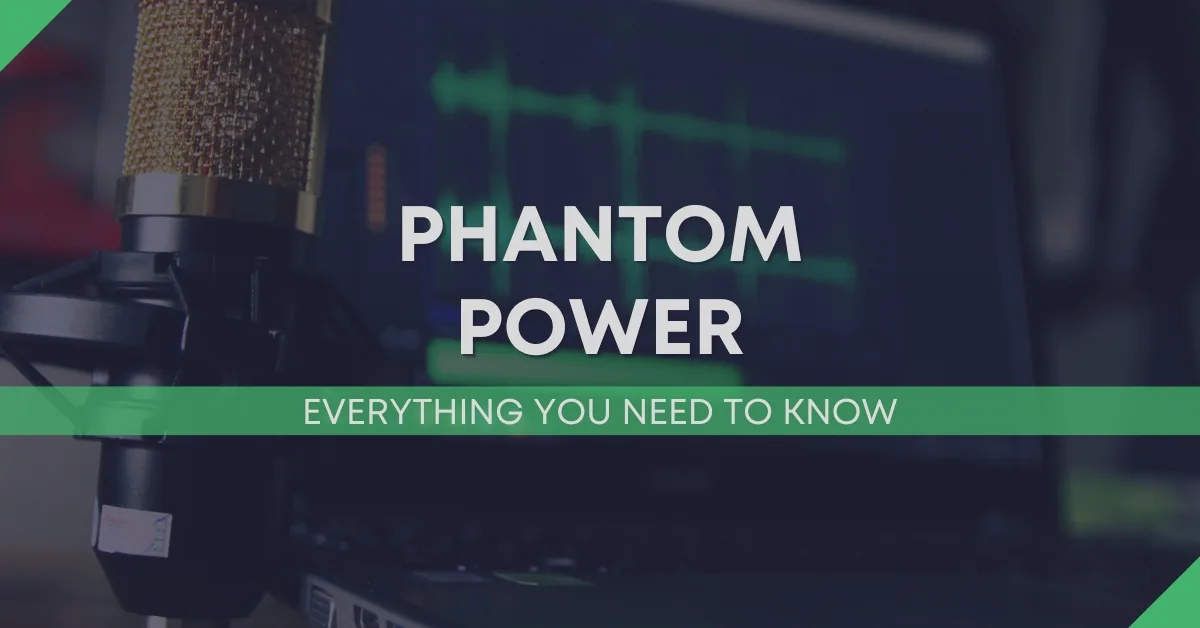
Phantom power is a feature found on some audio mixers and interfaces that allows you to use condenser microphones with them. It is a DC voltage that is supplied to the microphone through the audio cable. The voltage is used to power the microphone capsule and the internal electronics of the microphone.
In this article, we will explain everything you need to know about phantom power for microphones, including how it works and when it is needed.
Phantom power is a method of powering condenser microphones. It is a DC voltage that is applied to both the hot and cold leads of the microphone. The voltage is 48 volts, and it is supplied through the XLR cable that is connected to the microphone.
Phantom power is necessary for condenser microphones because they have active electronics that require power in order to function.
If you are using a condenser microphone, you will need to make sure that your audio interface or mixer has phantom power enabled. Most audio interfaces and mixers have a switch or button that you can use to turn phantom power on or off.
No, not all microphones need phantom power. However, most condenser microphones will require phantom power in order to function properly. Dynamic microphones don't need phantom power.
NOTE: It's important to not apply phantom power to microphones that don't require it. Doing this long term will cause damage to the microphone.
Related Article: Dynamic Vs Condenser Microphones - What Is The Difference?
There are a few ways to tell if a microphone needs phantom power.
First, check the specifications of the microphone. If it requires phantom power, it will usually say so in the specs.
Second, check the manuals or documentation that came with the microphone. Again, if the microphone needs phantom power, this should be stated in the docs.
Finally, if you're still not sure, you can always contact the manufacturer of the microphone and ask them directly.
There are two ways to provide phantom power to a microphone: through a mixing console/audio interface or directly from a power supply. If you are using a mixing console, you will need to set the console to provide phantom power to the appropriate channel. If you are using a power supply, you will need to connect the power supply to the microphone using an XLR cable.

Yes, there are some risks associated with using phantom power, but they are relatively minor. The main risk is that you could damage your equipment if you're not careful. Phantom power is a high voltage, so if you accidentally short it out, you could fry your equipment.
Another risk is that you could electrocute yourself if you're not careful. However, this is only a risk if you're working with live wires. If you're careful and use proper safety precautions, you should be fine.
In general, phantom power is a safe and effective way to power your equipment. Just be sure to take some basic safety precautions and you should be fine.
In conclusion, phantom power is an important concept to understand when using microphones. To summarize, phantom power is used to provide power to most condenser microphones and can be supplied either by a mixing console/audio interface or by an external power supply. Now that you know everything about phantom power, you will be ready for your next recording session!
If you found the information helpful in this article, please consider subscribing to my blog for more music production tips, tricks, and advice.
"Some of the links within this article are affiliate links. These links are from various companies such as Amazon. This means if you click on any of these links and purchase the item or service, I will receive an affiliate commission. This is at no cost to you and the money gets invested back into Audio Sorcerer LLC."